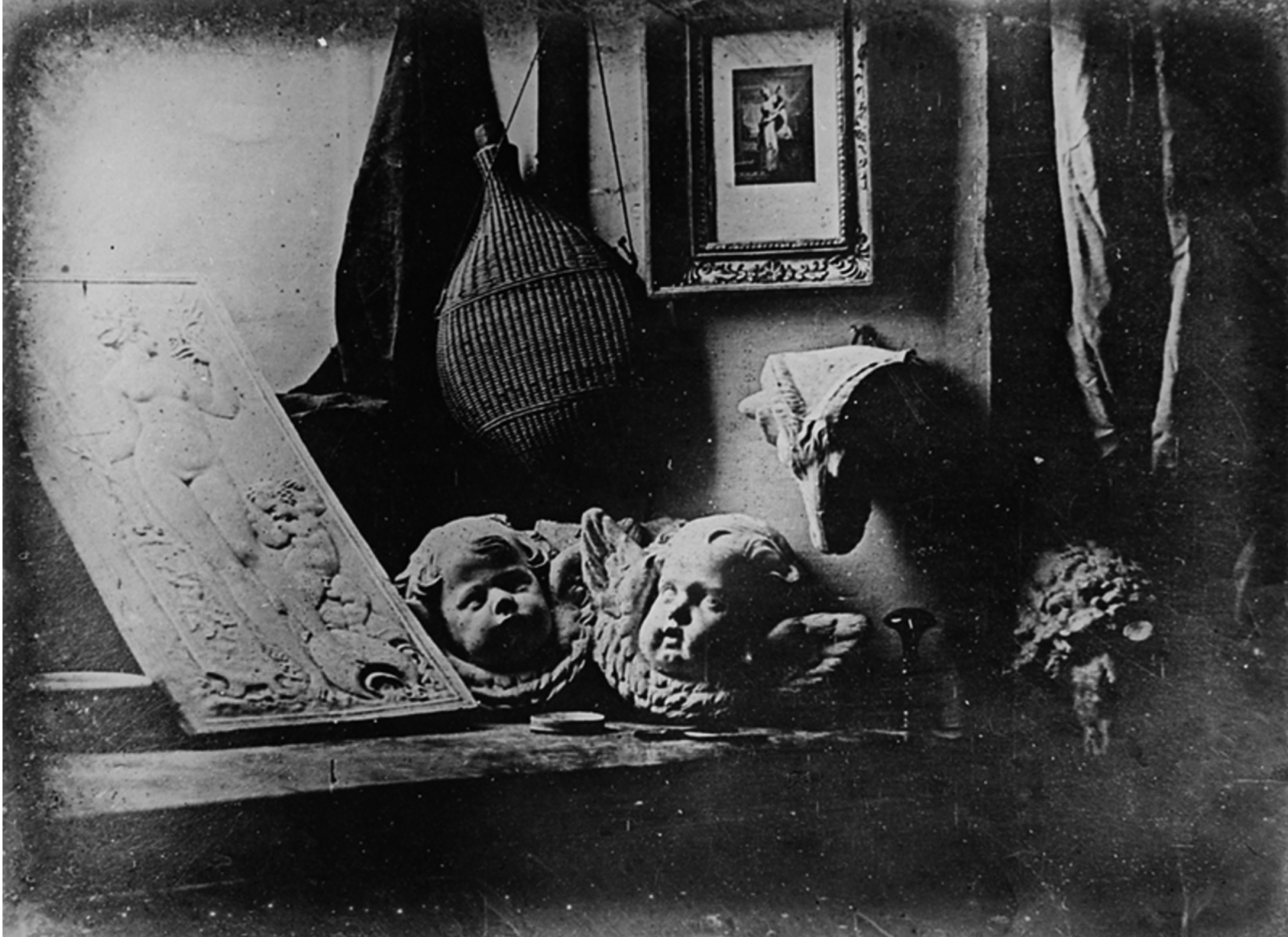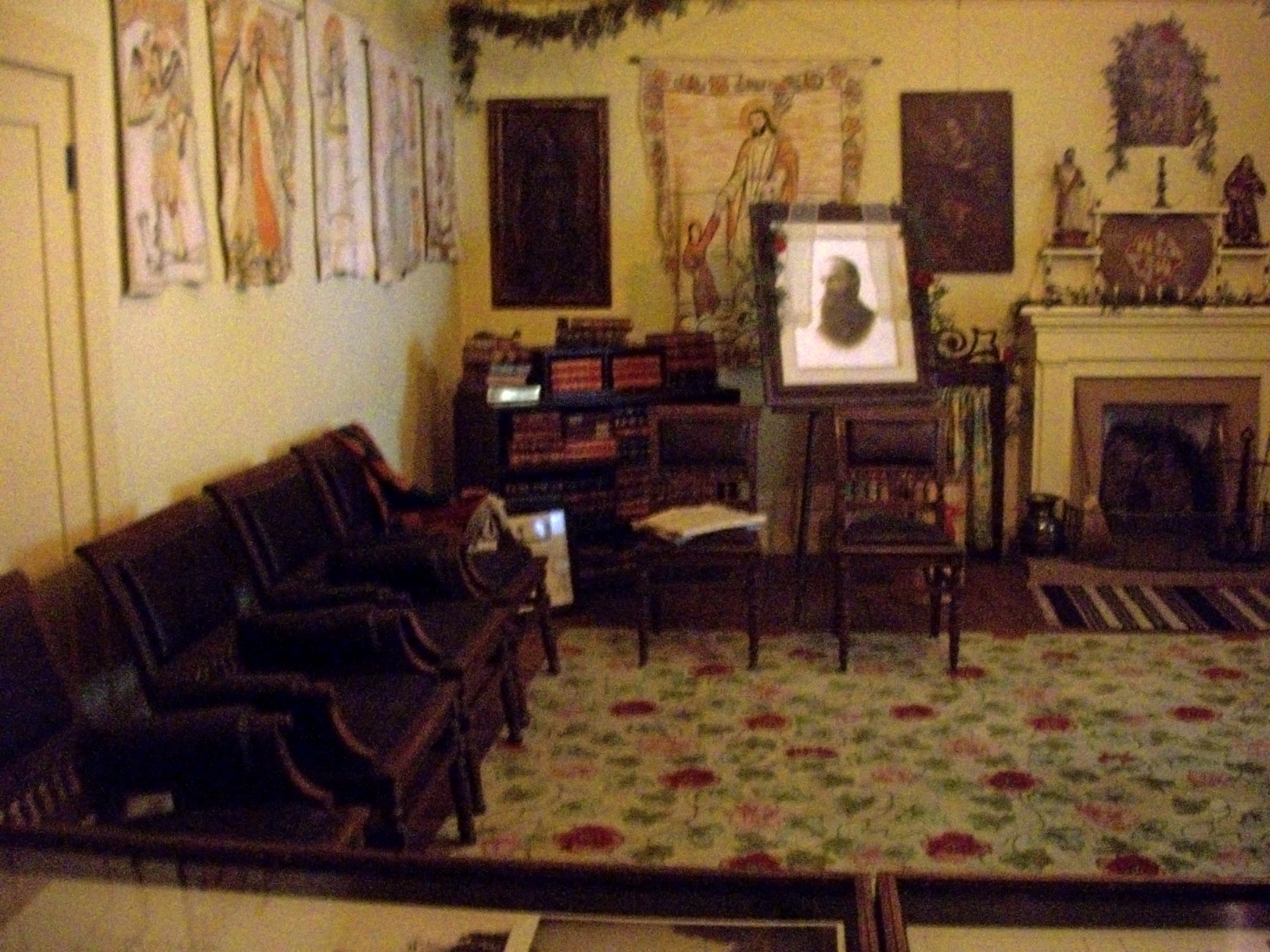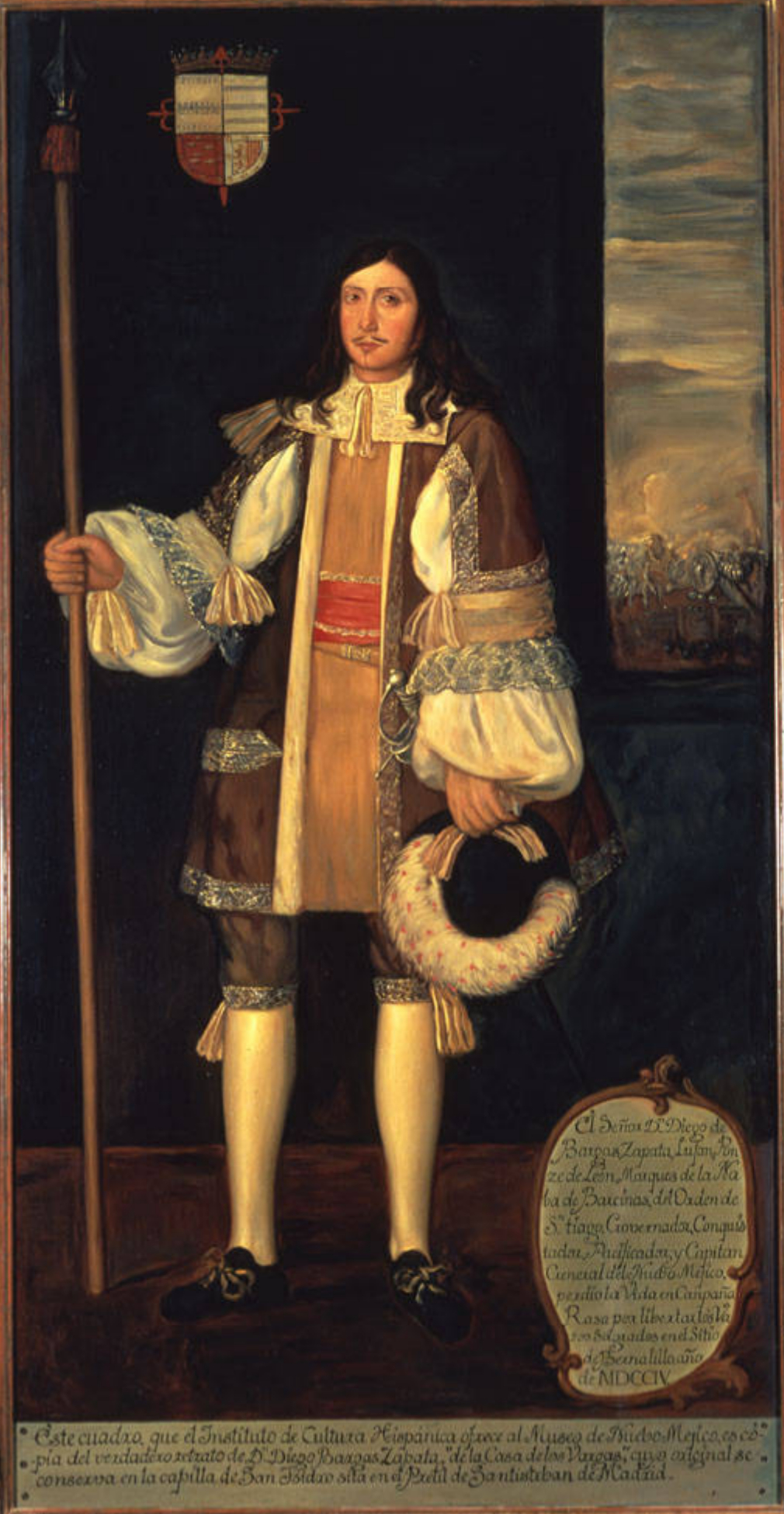|
Albino Pérez
Albino Pérez (died 8 August 1837) was a Mexican soldier and politician who was appointed Governor of New Mexico by the Centralist Republic of Mexico. He pursued unpopular policies, suffered a revolt in July 1837, and in August 1837 was killed by rebel sympathizers. Career Albino Pérez was a native of Veracruz, Mexico. Pérez was a distinguished army colonel from central Mexico. He was appointed Governor of New Mexico by President Antonio López de Santa Anna in 1835, under the new centralized form of government. He succeeded Francisco Sarracino as civilian governor and Captain Blas de Hinojos as military governor. Hinojos had been killed on 28 February 1835 in an ambush while on a slave raid into Navajo country. Pérez rapidly became unpopular as a representative of the centralist government who was expected to enforce its Departmental Plan and taxation program. On 16 October 1835, he announced new regulations of trade along the Santa Fe–Chihuahua Trail. He linked increases ... [...More Info...] [...Related Items...] OR: [Wikipedia] [Google] [Baidu] |
Mexican Governors Of New Mexico
Mexican governors of New Mexico were the political chief executives of the province and later territory of Santa Fe de Nuevo México (New Mexico) between 1822, when Mexico gained independence from Spain, and 1846, when the United States occupied the territory following the Mexican–American War. It was succeeded as a territory of the United States, and as the U.S. state of New Mexico. History In January 1822 the last Governor under the Spanish regime, Facundo Melgares, lost the title of governor and was now called ''géfe político'' (political chief) and ''géfe militar'' (military chief). Melgáres left the political office on July 5, 1822, and Francisco Xavier Chavez took his place, holding office for just five months, when he was succeeded in November 1822 by Colonel José Antonio Vizcarra. Vizcarra had succeeded Melgáres as ''géfe militar'' in October 1822. In September 1823, a retired Militia Captain named Don Bartolomé Baca was appointed ''géfe politico''. Eleven mor ... [...More Info...] [...Related Items...] OR: [Wikipedia] [Google] [Baidu] |
Revolt Of 1837 (New Mexico)
The Revolt of 1837, also known as the Chimayó Rebellion, was a popular insurrection in New Mexico against Albino Pérez, the Mexico, Mexican governor at the time. Background Albino Pérez, Governor Pérez had arrived from central Mexico in 1835. The Pérez administration was opposed by the people and especially by the inhabitants of the northern part of the territory, who resented the "outsider" forced upon them by President Antonio López de Santa Anna, Santa Anna. Their dissatisfaction was exacerbated when, following Santa Anna's defeat in Texas, the Mexican government drafted a 1835 Constitution of Mexico, constitution that tightened administration and tax-collection and imposed property qualifications on political participation. New Mexicans assumed that Pérez would attempt to levy the taxes and completely restructure the regional political system in accordance with the new constitution. Other grievances included Pérez's reinstatement of Francisco Sarracino, a former gove ... [...More Info...] [...Related Items...] OR: [Wikipedia] [Google] [Baidu] |
Mexican Governors Of Santa Fe De Nuevo México
Mexican may refer to: Mexico and its culture *Being related to, from, or connected to the country of Mexico, in North America ** People *** Mexicans, inhabitants of the country Mexico and their descendants *** Mexica, ancient indigenous people of the Valley of Mexico ** Being related to the State of Mexico, one of the 32 federal entities of Mexico ** Culture of Mexico *** Mexican cuisine *** historical synonym of Nahuatl, language of the Nahua people (including the Mexica) Arts and entertainment * "The Mexican" (short story), by Jack London * "The Mexican" (song), by the band Babe Ruth * Regional Mexican, a Latin music radio format Films * ''The Mexican'' (1918 film), a German silent film * ''The Mexican'' (1955 film), a Soviet film by Vladimir Kaplunovsky based on the Jack London story, starring Georgy Vitsin * ''The Mexican'', a 2001 American comedy film directed by Gore Verbinski, starring Brad Pitt and Julia Roberts Other uses * USS ''Mexican'' (ID-1655), United State ... [...More Info...] [...Related Items...] OR: [Wikipedia] [Google] [Baidu] |
Neomexicano Slave Owners
The Hispanos of New Mexico, also known as Neomexicanos ( es, Neomexicano) or Nuevomexicanos, are Hispanic residents originating in the historical region of Santa Fe de Nuevo México, today the US state of New Mexico (''Nuevo México''), southern Colorado, and other parts of the Southwestern United States including Arizona, Nevada, Texas, and Utah. They are descended from Oasisamerica groups and the settlers of the Viceroyalty of New Spain, the First Mexican Empire and Republic, the Centralist Republic of Mexico, and the New Mexico Territory. The descendants of these New Mexican settlers make up an ethnic community of more than 340,000 in New Mexico, with others throughout the historical Spanish territorial claim of ''Nuevo México''. Alongside Californios and Tejanos, Neomexicanos are part of the larger Hispano community of the United States, who have lived in the American Southwest since the 16th century. These groups are differentiated by time period from the population of M ... [...More Info...] [...Related Items...] OR: [Wikipedia] [Google] [Baidu] |
History Of Slavery In New Mexico
Slavery in New Mexico existed among the Native American (Indian) tribes prior to the arrival of the first Europeans. In 1542, the Spanish king banned the enslavement of the Indians of the Americas in Spanish colonies, but the ban was mostly ineffective. The enslavement of Indians was common during the Spanish exploration and colonization of New Mexico from 1540 to 1821. Slaves of the Spanish included a few of the Pueblos living in the Spanish colony, but most slaves were captured from other Indian tribes in the region. Women were more valued than men as slaves. Slaves were not only valued for their labour, but were also a prestige item among the more prominent and prosperous of the Spanish colonists. Enslavement of an individual was not always permanent. Slaves, especially women, often gained kinship relationships with their owners. The offspring and descendants of enslaved persons were called genizaros and made up one-third of New Mexico's population in the early 19th centuries. ... [...More Info...] [...Related Items...] OR: [Wikipedia] [Google] [Baidu] |
Assassinated Mexican Politicians
Assassination is the murder of a prominent or important person, such as a head of state, head of government, politician, world leader, member of a royal family or CEO. The murder of a celebrity, activist, or artist, though they may not have a direct role in matters of the state, may also sometimes be considered an assassination. An assassination may be prompted by political and military motives, or done for financial gain, to avenge a grievance, from a desire to acquire fame or notoriety, or because of a military, security, insurgent or secret police group's command to carry out the assassination. Acts of assassination have been performed since ancient times. A person who carries out an assassination is called an assassin or hitman. Etymology The word ''assassin'' may be derived from '' asasiyyin'' (Arabic: أَسَاسِيِّين, ʾasāsiyyīn) from أَسَاس (ʾasās, "foundation, basis") + ـِيّ (-iyy), meaning "people who are faithful to the foun ... [...More Info...] [...Related Items...] OR: [Wikipedia] [Google] [Baidu] |
1837 Deaths
Events January–March * January 1 – The destructive Galilee earthquake causes 6,000–7,000 casualties in Ottoman Syria. * January 26 – Michigan becomes the 26th state admitted to the United States. * February – Charles Dickens's '' Oliver Twist'' begins publication in serial form in London. * February 4 – Seminoles attack Fort Foster in Florida. * February 25 – In Philadelphia, the Institute for Colored Youth (ICY) is founded, as the first institution for the higher education of black people in the United States. * March 1 – The Congregation of Holy Cross is formed in Le Mans, France, by the signing of the Fundamental Act of Union, which legally joins the Auxiliary Priests of Blessed Basil Moreau, CSC, and the Brothers of St. Joseph (founded by Jacques-François Dujarié) into one religious association. * March 4 ** Martin Van Buren is sworn in as the eighth President of the United States. ** The city of Chicago is incorporated. April–June * Apr ... [...More Info...] [...Related Items...] OR: [Wikipedia] [Google] [Baidu] |
1837 Murders In The United States
Events January–March * January 1 – The destructive Galilee earthquake causes 6,000–7,000 casualties in Ottoman Syria. * January 26 – Michigan becomes the 26th state admitted to the United States. * February – Charles Dickens's ''Oliver Twist'' begins publication in serial form in London. * February 4 – Seminoles attack Fort Foster in Florida. * February 25 – In Philadelphia, the Institute for Colored Youth (ICY) is founded, as the first institution for the higher education of black people in the United States. * March 1 – The Congregation of Holy Cross is formed in Le Mans, France, by the signing of the Fundamental Act of Union, which legally joins the Auxiliary Priests of Blessed Basil Moreau, CSC, and the Brothers of St. Joseph (founded by Jacques-François Dujarié) into one religious association. * March 4 ** Martin Van Buren is sworn in as the eighth President of the United States. ** The city of Chicago is incorporated. April–June * April 12 � ... [...More Info...] [...Related Items...] OR: [Wikipedia] [Google] [Baidu] |
Palace Of The Governors
The Palace of the Governors ( es, Palacio de los Gobernadores) is an adobe structure built in the Territorial Style of Pueblo architecture on Palace Avenue in Santa Fe, New Mexico. Located within the Santa Fe Historic District along the Santa Fe Plaza between Lincoln and Washington avenues, it has served as the seat of government for New Mexico for centuries, having been established as the capitol building of '' Nuevo México'' in 1610. History In 1610, Pedro de Peralta, the newly appointed governor of '' Santa Fe de Nuevo México'' covering most of the modern American Southwest, began construction on the Palace of the Governors, though some recent historical research has suggested that construction began midway through his term in 1618. In the following years, the Palace changed hands as the territory of New Mexico did, seeing the Pueblo Revolt of 1680, the Spanish return from 1693 to 1694, Mexican independence in 1821, American territorial status in 1848, and US statehood in 191 ... [...More Info...] [...Related Items...] OR: [Wikipedia] [Google] [Baidu] |
Daughters Of The American Revolution
The Daughters of the American Revolution (DAR) is a lineage-based membership service organization for women who are directly descended from a person involved in the United States' efforts towards independence. A non-profit group, they promote education and patriotism. The organization's membership is limited to direct lineal descendants of soldiers or others of the Revolutionary period who aided the cause of independence; applicants must have reached 18 years of age and are reviewed at the chapter level for admission. The DAR has over 185,000 current members in the United States and other countries. Its motto is "God, Home, and Country". Founding In 1889 the centennial of President George Washington's inauguration was celebrated, and Americans looked for additional ways to recognize their past. Out of the renewed interest in United States history, numerous patriotic and preservation societies were founded. On July 13, 1890, after the Sons of the American Revolution refused t ... [...More Info...] [...Related Items...] OR: [Wikipedia] [Google] [Baidu] |
San Ildefonso Pueblo
San Ildefonso Pueblo (Tewa: Pʼohwhogeh Ówîngeh ’òhxʷógè ʔówîŋgè"where the water cuts through" ) is a census-designated place (CDP) in Santa Fe County, New Mexico, United States, and a federally recognized tribe, established c. 1300 C.E. The Pueblo is self-governing and is part of the Santa Fe, New Mexico Metropolitan Statistical Area. The population was 524 as of the 2010 census, reported by the State of New Mexico as 1,524 in 2012, and there were 628 enrolled tribal members reported as of 2012 according to the Department of the Interior. San Ildefonso Pueblo is a member of the Eight Northern Pueblos, and the pueblo people are from the Tewa ethnic group of Native Americans, who speak the Tewa language. Geography San Ildefonso is located at (35.897902, -106.121834). According to the United States Census Bureau, the pueblo has a total area of , of which is land and (5.54%) is water. San Ildefonso Pueblo is located at the foot of Black Mesa. Demographics As ... [...More Info...] [...Related Items...] OR: [Wikipedia] [Google] [Baidu] |
Santa Cruz De La Cañada
Santa Cruz is a census-designated place (CDP) in Santa Fe County, New Mexico, Santa Fe County, New Mexico, United States. It is part of the Santa Fe, New Mexico Metropolitan Statistical Area. The population was 423 at the 2000 United States Census, 2000 census. History Overview The area that was later to be occupied by the village of Santa Cruz de la Cañada is located 25 miles northwest of Santa Fe, New Mexico, and a half-mile east of Española, New Mexico, at 5,655 feet AMSL, and UTM NAD 83, Z-13S, 404927E, 3983643N in the valley of the Santa Cruz River half-mile from its confluence with the Rio Grande. Upon arrival of Spanish conquistadores in 1540, the Santa Cruz area was inhabited by Tewa speakers (descendants of "Ancestral Puebloans," formerly referred to as "Anasazi"), and after Vargas' "reconquests" (of the Pueblo Revolt) of 1692 and 1696, by southern Tewa (or Tano) who had been relocated from the Galisteo Basin, 45 miles south, as a result of Vargas' Spanish repopulation ... [...More Info...] [...Related Items...] OR: [Wikipedia] [Google] [Baidu] |




